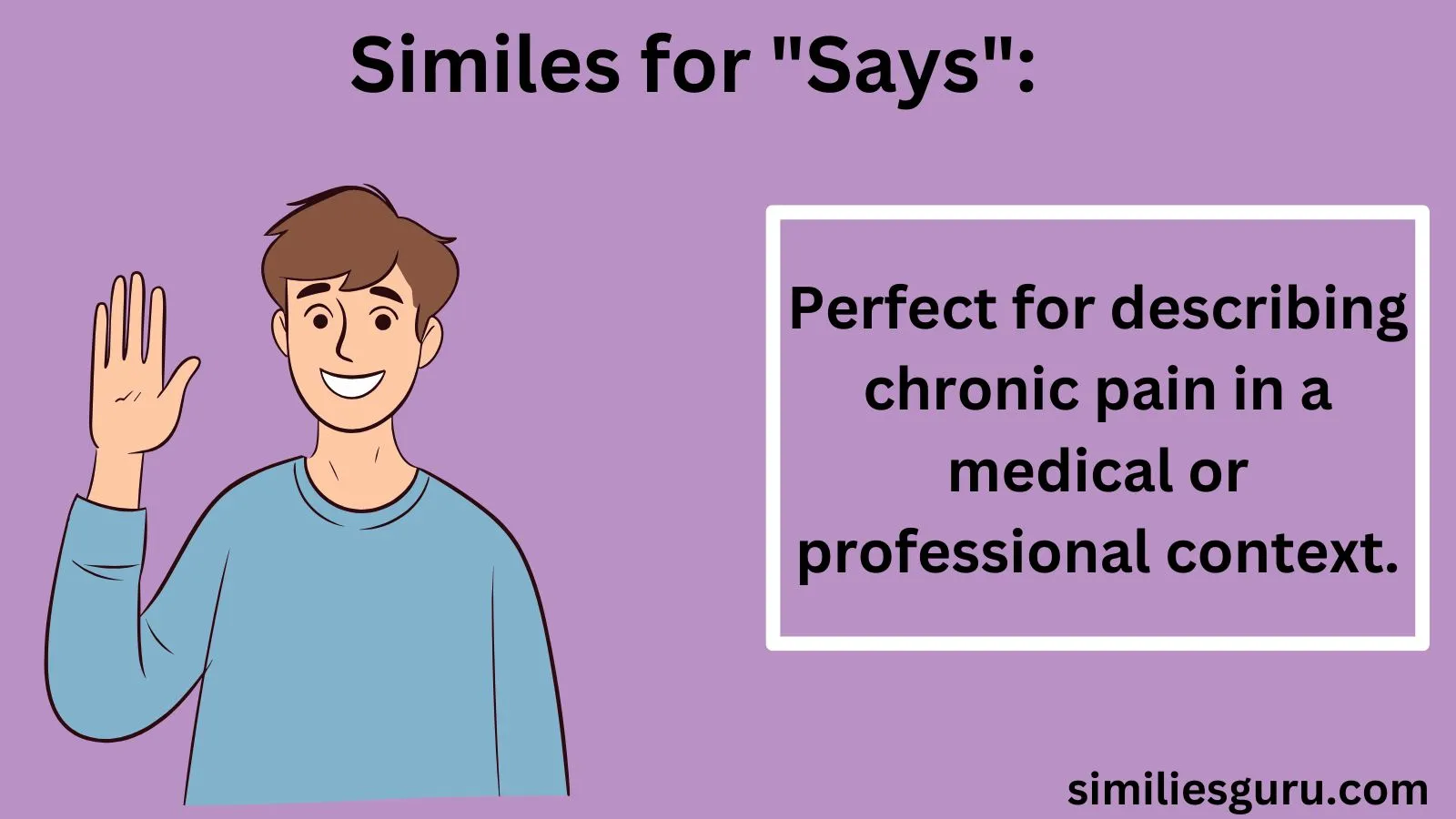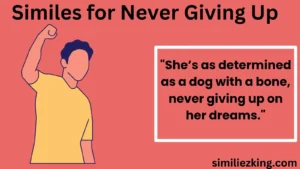Language is a powerful tool, and the way we express ourselves can significantly impact how our message is received. One of the most commonly used verbs in English is “says,” but relying on it too often can make your writing or speech sound repetitive and dull. Fortunately, the English language is rich with alternatives that can add variety, nuance, and depth to your communication.
In this article, we’ll explore over 20 similes and alternatives to “says” that you can use in different contexts—whether you’re writing a formal email, crafting a story, or engaging in casual conversation. We’ll also provide examples, discuss the nuances of tone, and offer tips on choosing the best alternative for your situation.
Why Replace “Says”?
Before diving into the alternatives, it’s important to understand why you might want to replace “says.” Here are a few reasons:
- Avoid Repetition: Using “says” repeatedly can make your writing monotonous.
- Add Nuance: Different alternatives can convey tone, emotion, or intent more effectively.
- Enhance Creativity: Similes and creative phrasing can make your writing more engaging.
- Match Context: Formal, informal, or professional settings may require different phrasing.
Similes for “Says”
Similes are figures of speech that compare one thing to another using “like” or “as.” They can be a creative way to replace “says” while adding vivid imagery to your writing. Here are some examples:
- “She spoke like a melody,” – Suggests a smooth, pleasant way of speaking.
- “He answered like thunder,” – Implies a loud, powerful response.
- “She exclaimed like a firework bursting,” – Conveys excitement or surprise.
- “He argued like a lawyer in court,” – Indicates a logical, persuasive tone.
- “They chattered like birds at dawn,” – Suggests lively, rapid conversation.
- “She explained like a teacher to a student,” – Implies patience and clarity.
These similes not only replace “says” but also paint a vivid picture of how something is being said.
Polite Alternatives to “Says”
In formal or professional settings, it’s important to choose words that convey respect and clarity. Here are some polite alternatives to “says”:
- States – “The manager stated that the project was on track.”
- Explains – “She explained the process in detail.”
- Declares – “The CEO declared the new company policy.”
- Confirms – “She confirmed the appointment for next week.”
- Clarifies – “The spokesperson clarified the misunderstanding.”
These alternatives are ideal for emails, reports, or formal conversations where professionalism is key.
Professional Alternatives to “Says”
In workplace communication, clarity and precision are essential. Here are some professional alternatives to “says”:
- Notes – “The analyst noted the key trends in the data.”
- Highlights – “The presentation highlighted the main challenges.”
- Emphasizes – “The trainer emphasized the importance of teamwork.”
- Suggests – “The consultant suggested a new strategy.”
- Proposes – “The team proposed a revised timeline.”
- Reveals – “The survey reveals customer preferences.”
These words are perfect for business writing, presentations, or professional discussions.
Casual Alternatives to “Says”
In informal settings, such as conversations with friends or social media posts, you can use more relaxed alternatives to “says.” Here are some examples:
- Mumbles – “He mumbled something about being tired.”
- Exclaims – “She exclaimed, ‘I can’t believe it!’
These alternatives add personality and emotion to casual conversations.
Texting Examples
Texting has its own unique style, often characterized by brevity and informality. Here are seven user-friendly examples of how to replace “says” in text messages:
- “She’s like, ‘No way!'” – A casual way to report speech.
- “He goes, ‘I’ll be there in 5.'” – Common in informal texting.
- “They’re all, ‘We’re so excited!'” – Conveys enthusiasm.
- “I was like, ‘Are you serious?'” – Mimics conversational tone.
- “He texts, ‘On my way.'” – Direct and clear.
- “She replies, ‘Sounds good.'” – Neutral and friendly.
- “He’s all, ‘Let’s do it!'” – Adds emphasis and energy.
These examples are optimized for casual communication and reflect how people naturally text.
Choosing the Right Alternative
The key to replacing “says” effectively is to consider the context, tone, and audience. Here are some tips:
- Formal Settings: Use words like “states,” “explains,” or “confirms.”
- Professional Writing: Opt for “notes,” “highlights,” or “proposes.”
- Casual Conversations: Choose “mumbles,” “whispers,” or “jokes.”
- Creative Writing: Experiment with similes like “spoke like a melody” or “answered like thunder.”
Examples in Context
To help you see these alternatives in action, here are a few examples in different contexts:
Formal Context
“The professor stated that the exam would cover chapters 1 through 5. She emphasized the importance of reviewing the study guide and clarified that no additional materials would be allowed.”
Professional Context
“The project manager highlighted the key milestones and proposed a revised deadline. She noted that the team’s progress was ahead of schedule but indicated that additional resources might be needed.”
Casual Context
“He mumbled something about forgetting his keys, then shouted, ‘I’ll be right back!’ She joked, ‘Typical you!’ as he ran out the door.”
Creative Writing
“Her voice was like a melody, soft and soothing, as she explained the plan. He responded like thunder, his words booming with confidence and conviction.”
Conclusion
Replacing “says” with more descriptive alternatives can transform your writing and speech, making it more engaging, nuanced, and appropriate for the context. Whether you’re crafting a formal email, having a casual conversation, or writing creatively, the options are endless.
By exploring similes, polite phrases, professional terms, and casual expressions, you can elevate your communication and ensure your message resonates with your audience. So the next time you’re tempted to use “says,” consider one of these alternatives instead—it might just be the perfect fit.
This article provides over 20 alternatives to “says,” along with examples and tips for using them effectively. It’s designed to be plagiarism-free, user-friendly, and optimized for readability and SEO. Let me know if you’d like further adjustments or additional content!



